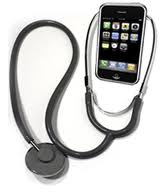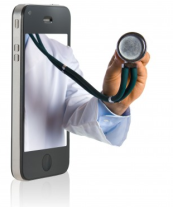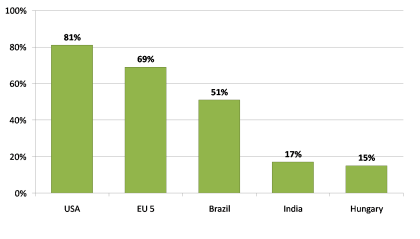 In a recent article on published on the Pharma Marketing Blog by John Mack the author, also known as @pharmaguy discussed the subject of health-related mobile applications and the mobile optimization of online content. To decide which one is more important to pharma is not the main task at hand. Our first and most important concern should not be whether one or the other could achieve a higher ROI. Simply because even if it turns out that online content optimal for mobile consumption brings higher ROI, pharma cannot deny the increasing popularity of health apps and the potential they provide. The same way mobile optimization cannot be ignored if health applications turn out to be the holy grail of patient engagement.
In a recent article on published on the Pharma Marketing Blog by John Mack the author, also known as @pharmaguy discussed the subject of health-related mobile applications and the mobile optimization of online content. To decide which one is more important to pharma is not the main task at hand. Our first and most important concern should not be whether one or the other could achieve a higher ROI. Simply because even if it turns out that online content optimal for mobile consumption brings higher ROI, pharma cannot deny the increasing popularity of health apps and the potential they provide. The same way mobile optimization cannot be ignored if health applications turn out to be the holy grail of patient engagement.
The article mentioned above refers to the Mobile Health 2012 survey published by the Pew Internet and American Life Project which showed that “half of smartphone owners use their devices to get health information and one-fifth of smartphone owners have health apps.” The study also pointed out that only around 9% of US adults have health applications on their phones. And @pharmaguy is right, this does not mean that these apps are used. How many times do we download an application and later find it impossible or even annoying to use?
Although the data about mobile health apps does not seem too promising, the percentage of smartphone owners who use their devices to access health-related information almost doubled. But does this tell us to focus exclusively on mobile optimization because that is what the current trend tells us? In my opinion this should be more of a wake up call or a warning sign that while online content has to be accessible on mobile devices, there is also a lot more to do to develop truly user-friendly health apps that users don’t just download but actually end up using as well. With only 19% of pharma websites being optimized for mobile platforms it is clear that there is a lot of unfulfilled potential in that area as well, but pharma companies are going to have to divide their efforts and make sure to achieve progress in both developing apps and optimizing online content.
Do you think pharma has the resources to conquer the challenges of the mobile era? Make sure to leave a comment below!
(Source: Pharma Marketing Blog)








